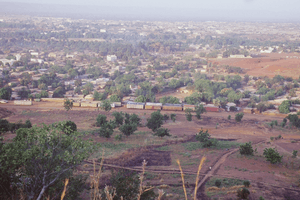Dakar–Niger Railway
| Dakar-Niger Railway | ||||||||||||||||||||||||||||||||||||||||||||||||||||||||||||||||||||||||||||||||||||||||||||||||||||||||||||||||||||||||||||||||||||||||||||||||||||||||||||||||||||||||||||||||||||||||||||||||||||||||||||||||||||||||
|---|---|---|---|---|---|---|---|---|---|---|---|---|---|---|---|---|---|---|---|---|---|---|---|---|---|---|---|---|---|---|---|---|---|---|---|---|---|---|---|---|---|---|---|---|---|---|---|---|---|---|---|---|---|---|---|---|---|---|---|---|---|---|---|---|---|---|---|---|---|---|---|---|---|---|---|---|---|---|---|---|---|---|---|---|---|---|---|---|---|---|---|---|---|---|---|---|---|---|---|---|---|---|---|---|---|---|---|---|---|---|---|---|---|---|---|---|---|---|---|---|---|---|---|---|---|---|---|---|---|---|---|---|---|---|---|---|---|---|---|---|---|---|---|---|---|---|---|---|---|---|---|---|---|---|---|---|---|---|---|---|---|---|---|---|---|---|---|---|---|---|---|---|---|---|---|---|---|---|---|---|---|---|---|---|---|---|---|---|---|---|---|---|---|---|---|---|---|---|---|---|---|---|---|---|---|---|---|---|---|---|---|---|---|---|---|---|
|
The Dakar Railway Station | ||||||||||||||||||||||||||||||||||||||||||||||||||||||||||||||||||||||||||||||||||||||||||||||||||||||||||||||||||||||||||||||||||||||||||||||||||||||||||||||||||||||||||||||||||||||||||||||||||||||||||||||||||||||||
| Overview | ||||||||||||||||||||||||||||||||||||||||||||||||||||||||||||||||||||||||||||||||||||||||||||||||||||||||||||||||||||||||||||||||||||||||||||||||||||||||||||||||||||||||||||||||||||||||||||||||||||||||||||||||||||||||
| Type | Heavy rail | |||||||||||||||||||||||||||||||||||||||||||||||||||||||||||||||||||||||||||||||||||||||||||||||||||||||||||||||||||||||||||||||||||||||||||||||||||||||||||||||||||||||||||||||||||||||||||||||||||||||||||||||||||||||
| Termini |
Dakar, Senegal Koulikoro, Mali | |||||||||||||||||||||||||||||||||||||||||||||||||||||||||||||||||||||||||||||||||||||||||||||||||||||||||||||||||||||||||||||||||||||||||||||||||||||||||||||||||||||||||||||||||||||||||||||||||||||||||||||||||||||||
| Stations | Dakar, Thiès, Tambacounda, Kayes, Kita, Kati, Bamako, Koulikoro | |||||||||||||||||||||||||||||||||||||||||||||||||||||||||||||||||||||||||||||||||||||||||||||||||||||||||||||||||||||||||||||||||||||||||||||||||||||||||||||||||||||||||||||||||||||||||||||||||||||||||||||||||||||||
| Operation | ||||||||||||||||||||||||||||||||||||||||||||||||||||||||||||||||||||||||||||||||||||||||||||||||||||||||||||||||||||||||||||||||||||||||||||||||||||||||||||||||||||||||||||||||||||||||||||||||||||||||||||||||||||||||
| Opened | January 1, 1924 | |||||||||||||||||||||||||||||||||||||||||||||||||||||||||||||||||||||||||||||||||||||||||||||||||||||||||||||||||||||||||||||||||||||||||||||||||||||||||||||||||||||||||||||||||||||||||||||||||||||||||||||||||||||||
| Technical | ||||||||||||||||||||||||||||||||||||||||||||||||||||||||||||||||||||||||||||||||||||||||||||||||||||||||||||||||||||||||||||||||||||||||||||||||||||||||||||||||||||||||||||||||||||||||||||||||||||||||||||||||||||||||
| Track length | 1,287 km (799.70 mi) | |||||||||||||||||||||||||||||||||||||||||||||||||||||||||||||||||||||||||||||||||||||||||||||||||||||||||||||||||||||||||||||||||||||||||||||||||||||||||||||||||||||||||||||||||||||||||||||||||||||||||||||||||||||||
| Number of tracks |
Double track between Dakar and Thiès Single track otherwise | |||||||||||||||||||||||||||||||||||||||||||||||||||||||||||||||||||||||||||||||||||||||||||||||||||||||||||||||||||||||||||||||||||||||||||||||||||||||||||||||||||||||||||||||||||||||||||||||||||||||||||||||||||||||
| Track gauge | 1,000 mm (3 ft 3 3⁄8 in) metre gauge | |||||||||||||||||||||||||||||||||||||||||||||||||||||||||||||||||||||||||||||||||||||||||||||||||||||||||||||||||||||||||||||||||||||||||||||||||||||||||||||||||||||||||||||||||||||||||||||||||||||||||||||||||||||||
| Operating speed | 65 km/h (40 mph) | |||||||||||||||||||||||||||||||||||||||||||||||||||||||||||||||||||||||||||||||||||||||||||||||||||||||||||||||||||||||||||||||||||||||||||||||||||||||||||||||||||||||||||||||||||||||||||||||||||||||||||||||||||||||
| ||||||||||||||||||||||||||||||||||||||||||||||||||||||||||||||||||||||||||||||||||||||||||||||||||||||||||||||||||||||||||||||||||||||||||||||||||||||||||||||||||||||||||||||||||||||||||||||||||||||||||||||||||||||||
The Dakar–Niger Railway connects Dakar, Senegal to Koulikoro, Mali. The name refers to the Niger River, not the Republic of Niger. It serves many cities in Senegal, including Thiès, and in Mali, including Kayes, Kita, Kati, Bamako. The line covers a course of 1,287 km of which 641 km lies in Mali. The line is managed by the Transrail consortium.
As of 2013 passenger services in Mali were only being offered three days between Bamako and Kayes via Kati and Diamou.[1] There were no international passenger trains in operation in 2014 but passenger services in Senegal existed between Dakar and Thiès.[2]
History
Construction

Construction work on the Dakar–Niger Railway began at the end of the 19th century under the French general Gallieni, commander of French Sudan.

The railroad connected the Niger River with the port of Dakar, allowing the transport of raw materials across the globe. The line was completed at the beginning of the 20th century, the Kayes-Koulikoro section being inaugurated in 1904, but the final section of line did not open until 1924.
1947 strike
In 1947, the railroad workers went on a several-month strike to obtain the same rights as the French railwaymen. The successful strike was celebrated as a turning point in the anti-colonial struggle by Senegalese writer Ousmane Sembène in his 1960 novel Les bouts de bois de Dieu.
Post-independence operation
With the independence of Mali and Senegal, after the break-up of the Mali Federation, control of the railroad was divided between two national organisations, the Régie des Chemin de fer du Mali (RCFM) and the Régie des Chemins de Fer du Sénégal.[3]
An agreement between Senegal and Mali in 1962 determined the common exploitation of the line by the two railway companies.
Accidents
An accident on 13 May 2009 killed five and injured thirty-seven when a Dakar bound train came off the tracks between Bala and Goudiry in Tambacounda Region, Senegal. Four carriages reportedly overturned, but no official cause has been determined.[4]
Current status

The Transrail Consortium was a Franco-Canadian management consortium which manages the interests of the Dakar–Niger Railway.[5]
The difficulties of management and the lack of investment have led to a degradation of the infrastructure and rolling stock and numerous delays. In Senegal the maximum speed of the trains has in many places been limited to 20 km/h due to the bad state of the tracks. In October 2003, Senegal and Mali entrusted the management of the network to the Transrail consortium.
In spite of Transrail's obligation to maintain a passenger service, Transrail intends to concentrate on the transport of goods. Many stations have been closed and the numbers of connections reduced, creating difficulties for isolated communities. Currently there are no passenger trains running between Kayes and Thies.
Transrail was bought in 2007 by the Belgian company Vecturis.[6] The line has not operated since May 2010.[7] In 2015, the governments of Mali and Senegal reached an agreement with China Railway Construction Corp (International) to restore the respective parts of the line. The concession to Transrail was terminated, and a new entity, Dakar Bamako Ferroviaire was to take its place.[8]
Statistics
"Tableau comparative des exportations par rail"[9] No sources are given for any of this data, which shows the number of tons of different products exported in various years:

| Product | 1924 | 1934 | 1952-3 | 1955-6 |
|---|---|---|---|---|
| Shelled peanuts | - | 7,422 | 7,250 | - |
| Peanuts in shells | 4,125 | 1,990 | 55,000 | 147,900 |
| Gum arabic | 936 | 1,196 | 1,000 | 1,500 |
| Karité | 416 | 2690 | 9,750 | - |
| Animal skins | 787 | 841 | 10,000 | - |
| Cotton | - | 185 | - | 18,200 |
| Millet | 236 | - | - | 850,000 |
| 1968[3] | |
|---|---|
| Passengers | 3,574,000 |
| Freight (in tonnes) | 1,548,000 |
Technical
- Gauge: 1,000 mm (3 ft 3 3⁄8 in)
- Brakes: The railway uses vacuum brakes.[10]
- Couplers: Buffers and Chain, European.[11] - see loco CC2286.
- Highest point 1,515 feet (462 m) near Bamako.
Branch lines
There are a number of branch lines including:
See also
References
- ↑ Mali, Seat 61, http://www.seat61.com/Senegal.htm#.U2JXgMfEc7A
- ↑ DW, 'Dakar-Niger' – Slow death of a railway line, 18 April 2014, http://www.dw.de/dakar-niger-slow-death-of-a-railway-line/g-17578058
- 1 2 Sampson 1972.
- ↑ At least five die as train derails in Senegal. 14 May 2009.
- ↑ Transrail
- ↑ Transrail (in French)
- ↑ "Le chemin de fer sénégalais" (in French). au-senegal.com. Retrieved 16 Jan 2014.
- ↑ Article in the Railway Gazette
- ↑ Jean-Claude Faur: La mise en valeur ferroviaire de l'AOF (1880-1939). Paris: Université de Paris, 1969 (=Thesis)
- ↑ http://www.derbysulzers.com/frenchwestafrica.html
- ↑ espacetrain.com
- Sampson, Henry (1972). Jane's World Railways: 1972–1973. Sampson Low, Marston & Co. ISBN 0-354-00107-8.
- Sembène, Ousmane (1960). Les bouts de bois de Dieu. Plon. ISBN 0-435-90959-2.
External links
- The Railway line of Dakar-Niger by Christian Derosier (French language)
- A slow train through Senegal. Gavin Kallmann, The Financial Times (London). January 17, 2009.
- Unido
- Information and travel advice from seat61.com
- A report on the situation of the line at the end of 2010 by Thomas Kautzor